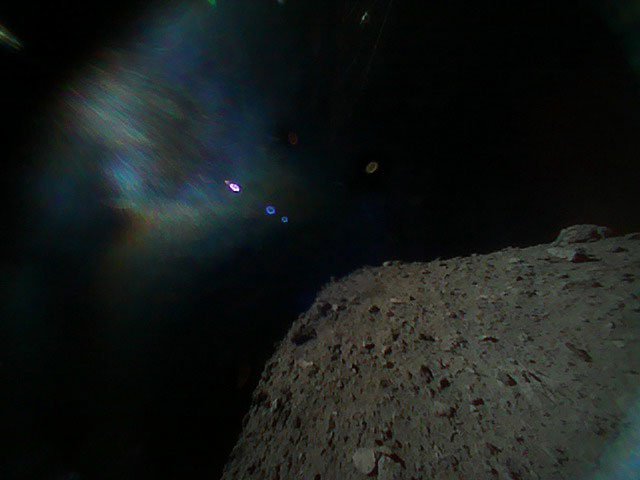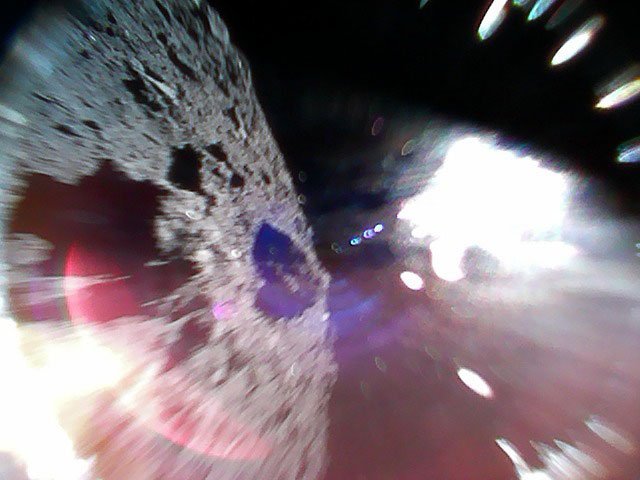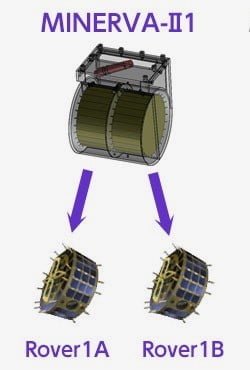A Japanese spacecraft just landed two rovers on an asteroid
In a remarkable feat of scientific endeavor, the Japan Aerospace Exploration Agency (JAXA) has successfully landed two small rovers on the surface of an asteroid hundreds of millions of miles from Earth.
“Both rovers … are in good condition,” Japan’s space agency tweeted on Saturday.
@haya2e_jaxa
We are sorry we have kept you waiting! MINERVA-II1 consists of two rovers, 1a & 1b. Both rovers are confirmed to have landed on the surface of Ryugu. They are in good condition and have transmitted photos & data. We also confirmed they are moving on the surface. #asteroidlanding
The rovers were carried aboard the Hayabusa 2 probe, which reached the Ryugu asteroid in June. It’s been staying close to the space rock since then, conducting exploratory activities and surveying the asteroid for sample collection prior to the weekend’s rover deployment.
Leaving Earth in 2014, Hayabusa 2 took 42 months to reach its target some 200 million miles away.
The ambitious mission took a big step forward over the weekend as Hayabusa 2 descended to within about 60 meters of the 900-meter-wide asteroid before sending down Rover-1A and Rover-1B inside the Minerva-II-1 lander. The two rovers wasted little time in capturing close-up images of their surroundings, as well as performing tasks such as taking temperature readings of the rock’s surface.
During the mission, the rovers will also conduct studies of Ryugu’s composition, which could give scientists new insight into the development of Earth and other planets in our solar system.
Photo taken by Rover-1B on Sept 21 at ~13:07 JST. It was captured just after separation from the spacecraft. Ryugu's surface is in the lower right. The misty top left region is due to the reflection of sunlight. 1B seems to rotate slowly after separation, minimising image blur. pic.twitter.com/P71gsC9VNI

This dynamic photo was captured by Rover-1A on September 22 at around 11:44 JST. It was taken on Ryugu's surface during a hop. The left-half is the surface of Ryugu, while the white region on the right is due to sunlight. (Hayabusa2 Project)

The two rovers are cylindrical in shape and rather small — just 7 cm tall with a diameter of 18 cm. Unlike the vehicles on Mars, these ones don’t have wheels. With the asteroid possessing low gravity, “hopping” provides a more efficient way of getting around, so scientists fit each rover with motor-powered internal rotors to enable such movement.

The Mobile Asteroid Surface Scout (MASCOT) will also be sent to explore the asteroid in the coming weeks. Developed by the German Aerospace Center and the French space agency CNES, MASCOT measures 29.5 cm × 27.5 cm × 19.5 cm. When it landson the space rock in October, MASCOT will spend time examining its surface structure and magnetic properties, among other things.
Finally, there’s the Rover-2, developed by a group of universities led by Japan’s Tohoku University. Planned for deployment in 2019, the rover one has an octagonal prism shape, a height of 16 cm, and a diameter of 15 cm. The Rover-2 incorporates several cameras as well as optical and ultraviolet LEDs for illumination that will help it detect floating dust particles.
Scientists are now gearing up for a crucial part of the mission involving the collection of particle samples from Ryugu to bring back to Earth. If all goes well, the tricky task will take place next month. It involves Hayabusa 2 moving close to the asteroid before firing what can be loosely described as a 2-kg “bullet” into the rock. This will help Hayabusa-2 to gather rock samples that haven’t been directly exposed to the environment of space, providing “fresh” material for scientists to study.
Hayabusa 2’s mission will run through December 2019, so the collection of samples won’t reach Earth until the end of 2020. But once it’s here, scientists will be eager to analyze the samples as they seek to unlock some of the enduring mysteries of our solar system.
Website to stay updated: http://www.hayabusa2.jaxa.jp/
InformationSource: Digital Trends